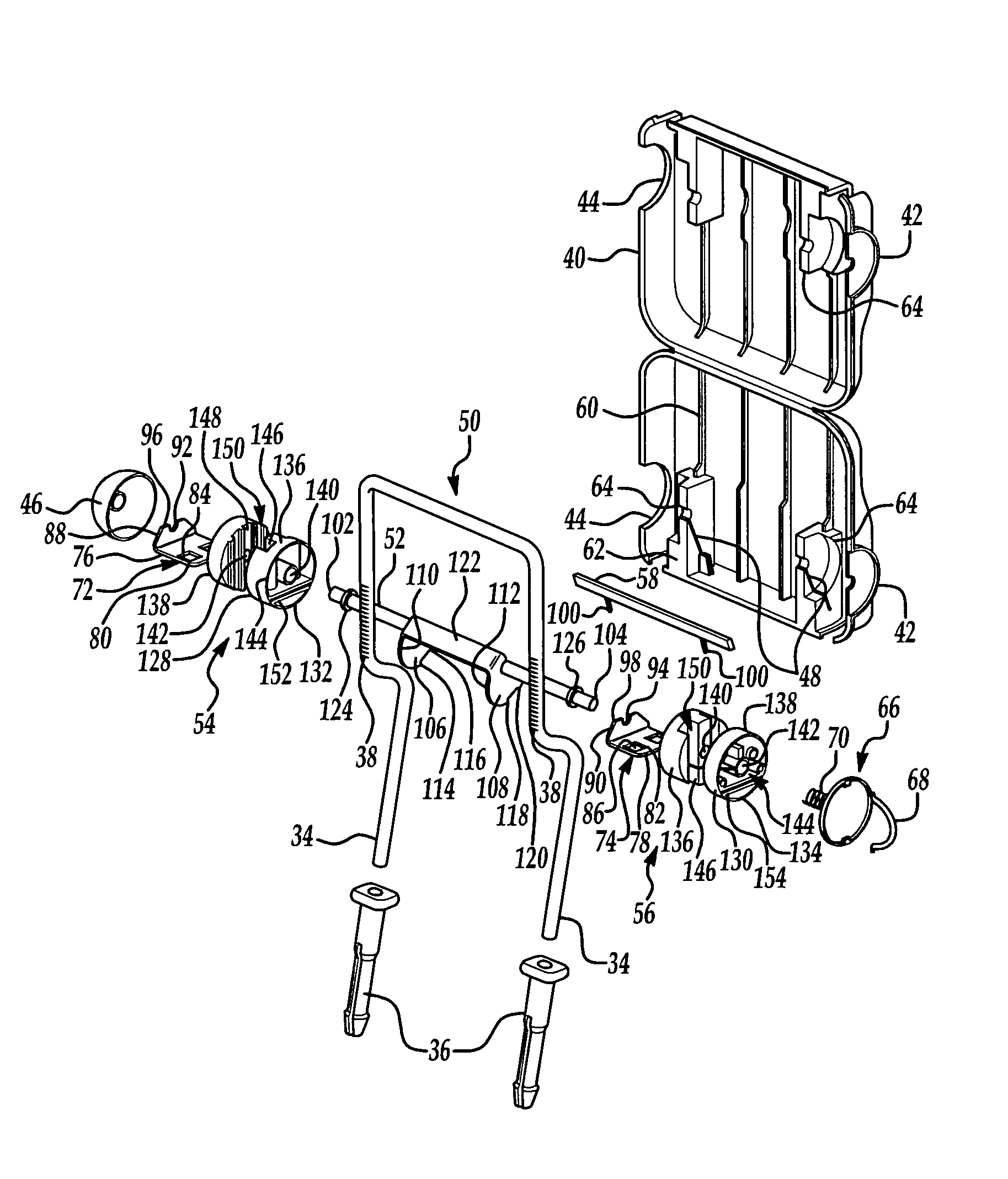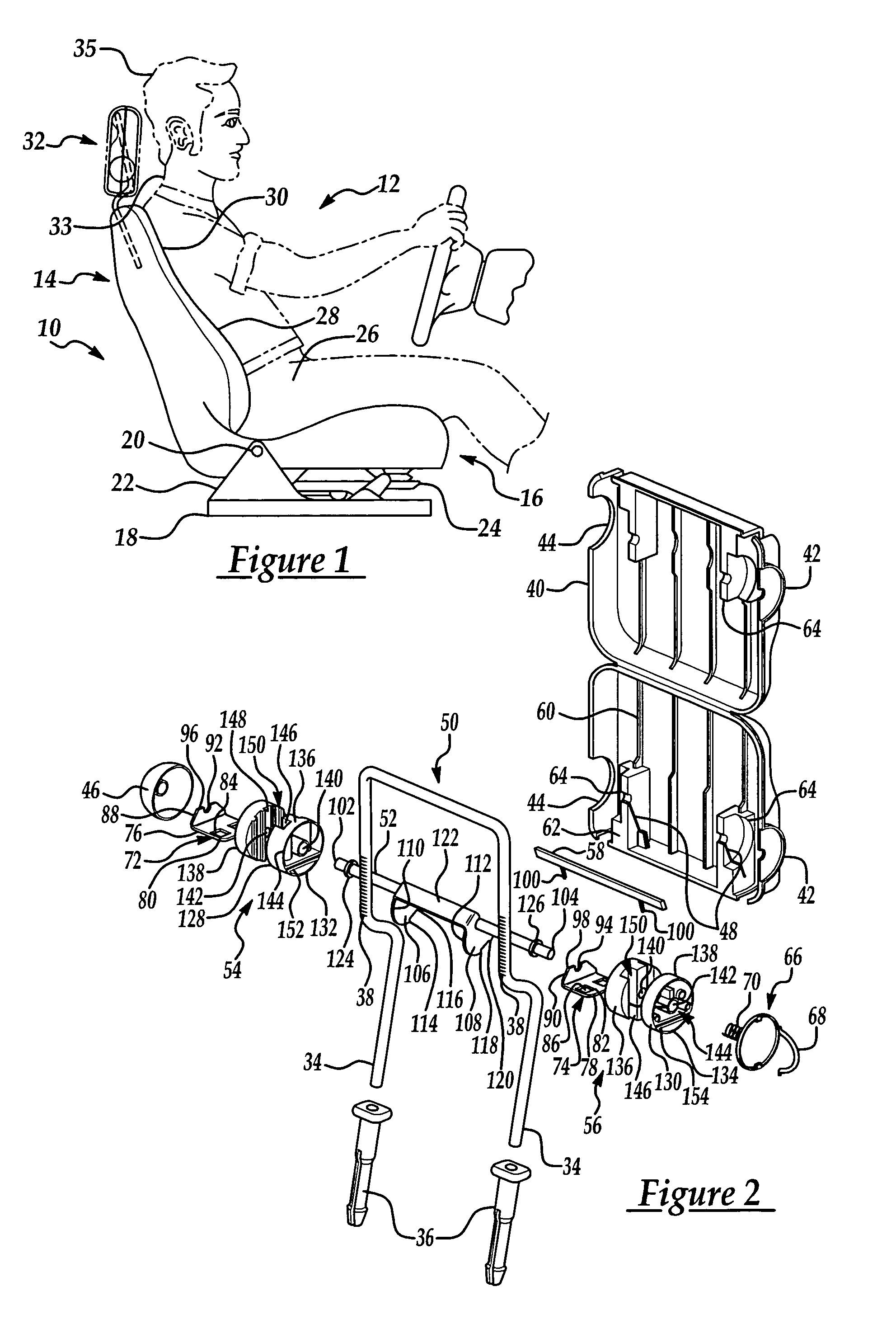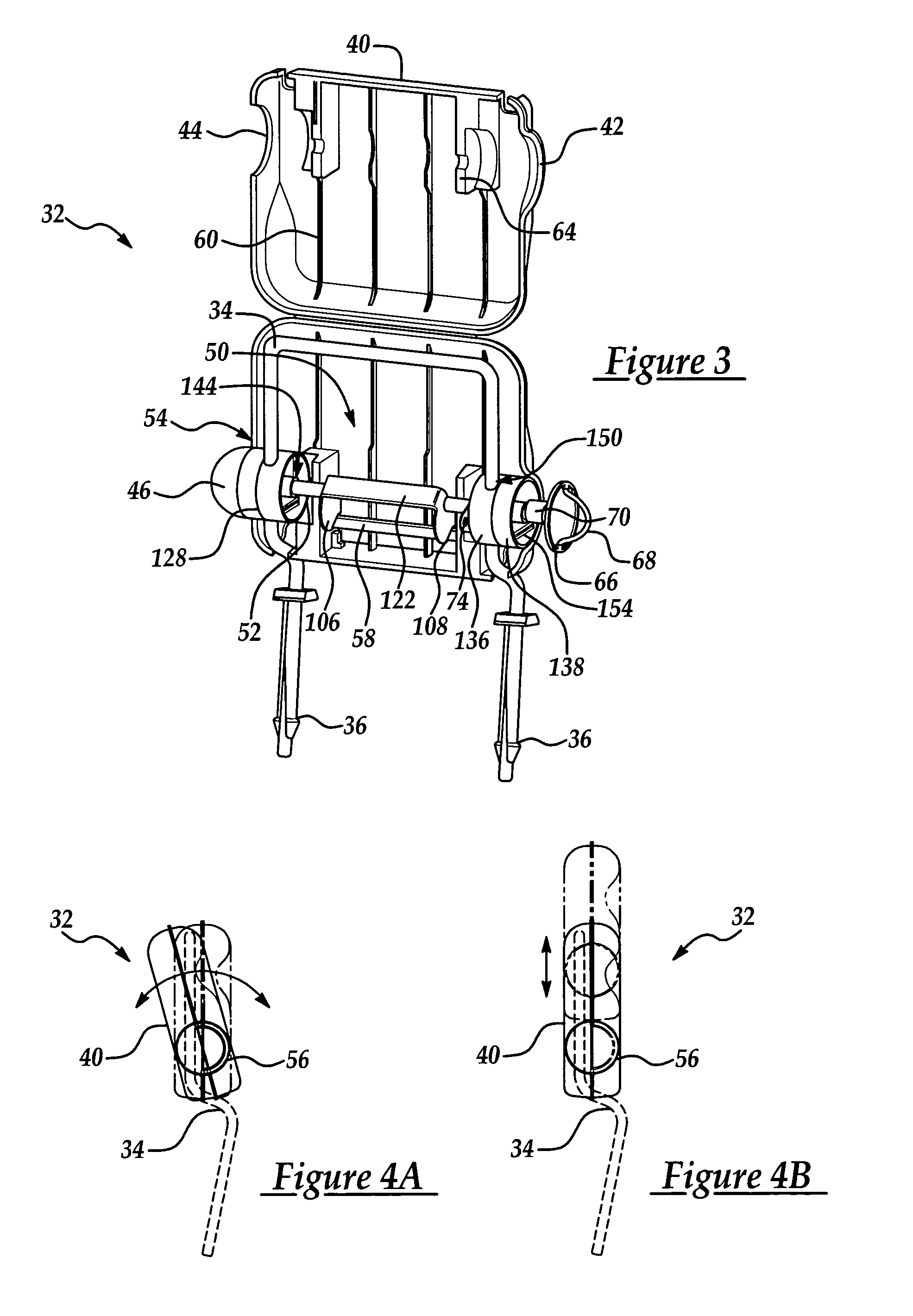Cam-driven four-way head restraint assembly
a head restraint and cam technology, applied in the field of head restraint assembly, can solve the problems of inconvenient use, inconvenient assembly, and complex components of the device, and achieve the effects of improving the aesthetic appearance, improving the position retention of the head restraint, and improving the positive stop
- Summary
- Abstract
- Description
- Claims
- Application Information
AI Technical Summary
Benefits of technology
Problems solved by technology
Method used
Image
Examples
Embodiment Construction
[0026]Referring now to the drawings where like numerals are used to designate like structure throughout the figures, a vehicle seat of the type that may employ a head restraint assembly of the present invention is generally indicated at 10 in FIG. 1. A theoretical “occupant” is schematically indicated at 12 and is shown in what could be referred to as a “normal driving position.” The vehicle seat 10 includes a seatback, generally indicated at 14, a lower seat assembly, generally indicated at 16 that is supported on a seat track 18, as is commonly known in the art. The seatback 14 may be pivotally connected about a pivot point 20 to the lower seat assembly 16 by means of a bracket 22 that forms a part of the seat track mechanism 18. In this way, the seat assembly 10 may be adapted to recline or adjust in a number of ways that are commonly known in the art. Furthermore, the lower seat assembly 16 may also include some sort of suspension or support mechanism 24 that adds comfort to the...
PUM
 Login to View More
Login to View More Abstract
Description
Claims
Application Information
 Login to View More
Login to View More - R&D
- Intellectual Property
- Life Sciences
- Materials
- Tech Scout
- Unparalleled Data Quality
- Higher Quality Content
- 60% Fewer Hallucinations
Browse by: Latest US Patents, China's latest patents, Technical Efficacy Thesaurus, Application Domain, Technology Topic, Popular Technical Reports.
© 2025 PatSnap. All rights reserved.Legal|Privacy policy|Modern Slavery Act Transparency Statement|Sitemap|About US| Contact US: help@patsnap.com



